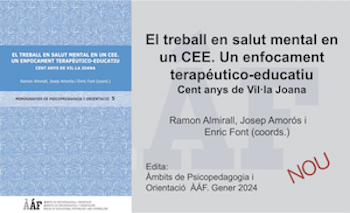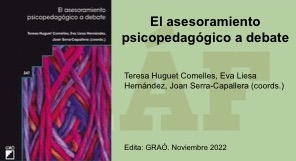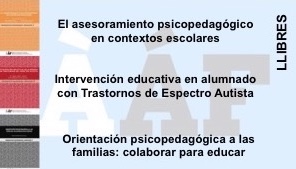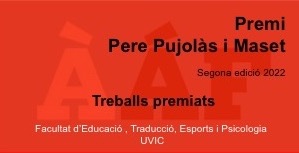The role of the emotions in the bullying processes
Abstract
There is a growing concern about the necessity of intervention to improve the social atmosphere in the schools. From this perspective one of the main aspects to consider is the situation of peer harassment that takes place in the schools. The peer harassment is a not very well-know phenomenon, although their soft forms are relatively common in all class groups.
On the other hand, many authors point out the social nature of the emotions and the consequences of the emotional states in the social relationships. This way, to know the role of cognitions and emotions of students involved in abuse situations is essential to adjust the intervention correctly and to have better possibilities of success.
In this paper we approach to the knowledge and the predominant emotions in abuse processes among peers, as much from the perspective of the main characters (aggressor and victim) as from of the different types of aggression (direct and indirect forms).
References
BLAIR, R.J.R. (1999): Responsiveness to distress cues in the child with psychopathic tendencies. Personality and individual differences, 27, 135-145.
COLLELL, J. (2003) Adaptació del CSBS-P. Psicologia de la Salut UAB. Treball no publicat.
CRICK, N.R., CASAS, J., i MOSHER, M. (1997): Relational and overt aggression in preschool. Developmental Psychology, 33, 579-588.
CRICK, N.R., i DODGE, K. (1994): A review and reformulation of social information-processing mechanisms in children's social adjustment. Psychological Bulletin, 115, 74-101.
DEFENSOR DEL PUEBLO (2000): Violencia escolar: el maltrato entre iguales en la Educación Secundaria Obligatoria. Madrid: Publicaciones del Defensor del Pueblo.
DEPT D’ENSENYAMENT i DEPT D’INTERIOR (2001): Joventut i seguretat a Catalunya. Generalitat de Catalunya
DIAZ-AGUADO, M.J. (2003): Educación intercultural y aprendizaje cooperativo, Madrid: Ediciones Pirámide.
ESCUDÉ, C. (2003): Adaptació del CSEQ-SR. Psicologia de la Salut UAB. Treball no publicat.
JUVONEN, J. i GRAHAM, S. (Eds). (2001): Peer harassment in school. NY: The Guilford Press.
MENESINI, E. et al. (1999): Bullying and Emotions. TMR Network Project
OLWEUS, D. (1983): Low school achievement and agressive behaviour in adolescent boys. In Human development. An interactional perspective. Magnusson, D. and Allen, V. (Eds.). New York: Academic Press, pp. 353-365.
OLWEUS, D. (1991): Bully/victim problems among schoolchildren: Basic facts and effects of a school based intervention program. En D. Pepler i K. Rubin (Eds.). The development and treatment of childhood aggression (pp. 411-448). Hillsdale, NJ: Erlbaum.
OLWEUS, D. (1993): Bullying at school. What we know and what we can do. Oxford: Blackwell.
OLWEUS, D. (1994): Annotation: Bullying at school: Basic facts and effects of a school based intervention program. Journal of child psychology and psychiatry, 35, 1171-1190.
SALMIVALLI, C., LAGERSPETZ, K., BJÖRKQVIST, K., OSTERMAN, K., i KAUKIAINEN, A. (1996): Bullying as a group process: participant roles and their relations to social status within the group. Aggressive Behavior, 22, 1-15.
SALMIVALLI, C., LAPPALAINEN, M., LAGERSPETZ, K. (1998): Stability and change of behavior in connection with bullying in schools: a two-year follow-up. Aggressive Behavior, 24, 205-218.
SALMIVALLI, C., NIEMINEN, E. (2002): Proactive and reactive aggression among school bullies, victims and bully-victims. Aggressive Behavior, 28, 30-44.
SMITH, P.K. (2003). Violence in schools: The response in Europe. London: RoutledgeFalmer.
SUTTON, J., i KEOGH, E. (2000): Social competition in school: relationship with bullying, machiavellianism amb personality. British Journal of Educational psychology, 70, 443-456.
SUTTON, J., SMITH, P.K., i SWETTENHAM, J. (1999): Bullying and "theory of mind": a critique of the "social skills deficit" view of anti-social behavior. Social Development, 8, 117-127.
UNESCO (1996): La educación encierra un tesoro. Informe de la Comisión Internacional sobre la Educación para el siglo XXI, Presidida per J. Delors. Madrid: Santillana, Ediciones UNESCO.
Downloads
Published
Issue
Section
License
The authors maintain their copyright and give the right to the first publication of the work to the journal, registered under a Creative Commons Attribution-Non Commercial-NoDerivs license. This license allows others to download the works and to share them with others as long as they credit the author, but it does not allow for any kind of modification or commercial use.















